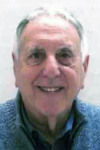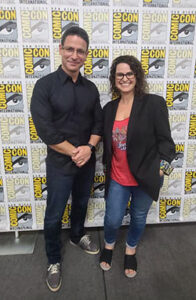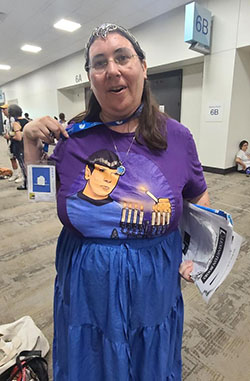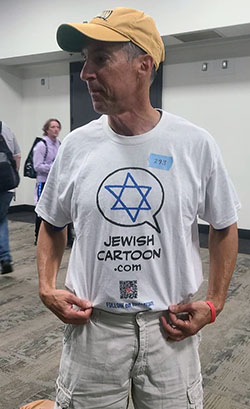Story by Donald H. Harrison; photos by Miriam Gershenson

SAN DIEGO – Exclusive of depictions of the Holocaust, there are two major types of Jewish stories in the comic book universe, according to panelists at Comic-Con on Friday, July 26.
There are those involving characters who by their actions or identities are Jewish. For example, Benjamin Jacob “Ben” Grimm, is a Marvel character who transforms into “The Thing” as a member of The Fantastic Four.

“The Thing’ enjoys being a Jew,” commented journalist Roy Schwartz, an Israeli-American who is the author of Is Superman Circumcised? The Complete Jewish History of the World’s Greatest Hero. “The Thing’ says the Shema,” noted Miriam Mora of the Center for Jewish History in New York City and co-creator of JewCE: the Jewish Comics Experience. Mora is also the author of Carrying a Big Schtick: Jewish Acculturation and Masculinity in the Twentieth Century.
Schwartz pointed out that “Raven” is a D.C. Comics character who is the daughter of a powerful demon father, Trigon, and a Jewish mother. A member of Teen Titans, her human alias is “Rachel Roth.”

Valerie Estelle Frankel, an author and editor who specializes in Jewish Science Fiction, gave the example of The Unfinished Corner by Dani Colman in which four Jewish kids studying for their b’nai mitzvah are whisked to an area of the universe where monsters and demons prevail and it becomes their duty to help perfect God’s creation – a tikkun olam story.
Jordan Gorfinkel, who as an editor at DC Comics managed for nearly ten years the Batman franchise, also is the author of Passover Haggadah Graphic Novel. He noted that Jewish themes are occasionally used in non-Jewish comic books such as Batman. For example, he said, one story involves an effort by the government to isolate Gotham from the rest of the U.S. because so much evil in contained within that city.
 “What if 50 people can be found who are not evil?” Or 40? Or 30? This was an adaptation of the biblical story of Abraham bargaining with God over the fate of Sodom and Gomorrah. (Genesis 18:23), Gorfinkel said.
“What if 50 people can be found who are not evil?” Or 40? Or 30? This was an adaptation of the biblical story of Abraham bargaining with God over the fate of Sodom and Gomorrah. (Genesis 18:23), Gorfinkel said.
Schwartz noted that when Albert, butler to Batman’s alter-ego, Bruce Wayne, died, “Bruce put a stone on his grave,” incorporating a Jewish custom into the storyline.
Mora said Jewish characters typically are portrayed as Ashkenazi Jews (of European heritage.) This misconception about how Jews look and where they come from gives rise to the antisemitic trope that the State of Israel is an example of white colonialists who have imposed themselves on indigenous people of color.
Schwartz said fewer than 50 percent of all the Jews in the world are Ashkenazim, and in Israel the percentage is less than 30 percent. He said Israelis comprise many different Jewish ethnicities in addition to Ashkenazim. He mentioned Sephardi, Mizrachi, Ethiopian, and Asian Jews contributing to the mix.
Are there any Jewish characters in comic books who are not Ashkenazim? The answer is “not enough,” although for example in The Unfinished Corner, among the foursome are individual Jews who are Black and Sephardic, and a religious Ashkenazi Jew and a secular one.
Asian Jews are represented by Leah Ai Tian in The Last Jewish Daughter of Kaifeng published by FairSquare Comics.
Why are Ashkenazim so dominant? Mora asked. Because the cartoonists are Ashkenazi Jews and they draw what they know, came back the answer. More kinds of Jews should become cartoonists to reflect diversity, Gorfinkel said.
While listening to the discussion, I recalled seeing embroidered matzo covers that pictured such biblical scenes as David playing the harp for Saul. Conceptualized by Ethiopian Jews, David and Saul are pictured as Black people. Graphic artists have a tendency to draw upon what surrounds them.
*
Donald H. Harrison is publisher and editor of San Diego Jewish World.
Thank you for covering the Jewish part of this event .